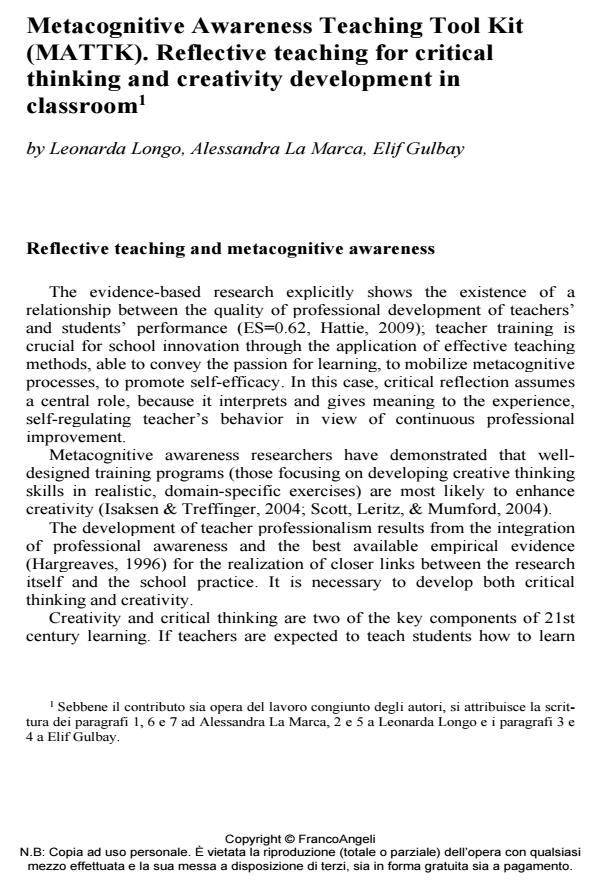Metacognitive Awareness Teaching Tool Kit (MATTK). Reflective teaching for critical thinking and creativity development in classroom
Titolo Rivista EDUCATIONAL REFLECTIVE PRACTICES
Autori/Curatori Longo Leonarda, Alessandra la Marca, Elif Gulbay
Anno di pubblicazione 2016 Fascicolo 2016/2
Lingua Italiano Numero pagine 0 P. 175-194 Dimensione file 257 KB
DOI 10.3280/ERP2016-002012
Il DOI è il codice a barre della proprietà intellettuale: per saperne di più
clicca qui
Qui sotto puoi vedere in anteprima la prima pagina di questo articolo.
Se questo articolo ti interessa, lo puoi acquistare (e scaricare in formato pdf) seguendo le facili indicazioni per acquistare il download credit. Acquista Download Credits per scaricare questo Articolo in formato PDF

FrancoAngeli è membro della Publishers International Linking Association, Inc (PILA)associazione indipendente e non profit per facilitare (attraverso i servizi tecnologici implementati da CrossRef.org) l’accesso degli studiosi ai contenuti digitali nelle pubblicazioni professionali e scientifiche
Situation awareness has long been recognized as an important variable in teacher performance. Research to date has focused on identifying characteristics of situation awareness for individuals, not on the behaviors and processes associated with situation awareness. The purpose of this review is to delineate and identify characteristics of teacher metacognitive awareness. In addition, implications are discussed and research questions are outlined that target the measurement and training of situation awareness. The research has examined the positive correlation between the meta cognitive awareness of teachers and the development of two soft skills (critical thinking and creativity) in students. The study involved 846 volunteer Sicilian teachers. Within this contribution, we present as a research result, the "MAT Tool Kit", a tool for reflective teaching which consists of six stages and aims at fostering meta cognitive awareness in teachers. These stages are based on a class-based inquiry approach which stems from the widely used "plan-do-review" cycle
Longo Leonarda, Alessandra la Marca, Elif Gulbay, Metacognitive Awareness Teaching Tool Kit (MATTK). Reflective teaching for critical thinking and creativity development in classroom in "EDUCATIONAL REFLECTIVE PRACTICES" 2/2016, pp 175-194, DOI: 10.3280/ERP2016-002012